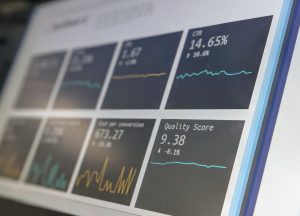Forex trading is one of the most popular markets for traders. The foreign exchange market is the largest financial market in the world, with over $5 trillion traded daily. It is a volatile market, and traders need to be able to calculate the risk involved in each trade. Calculating the risk in forex trading is crucial because it helps traders to make informed decisions about their trades. In this article, we will discuss how to calculate trade risk in forex.
What is Trade Risk?
Trade risk refers to the potential loss that a trader can experience if a trade goes against their expectations. Forex trading involves buying and selling currencies with the aim of making a profit. The profit or loss is determined by the difference between the buying price and the selling price of the currency. However, the exchange rate is constantly changing, and there is no guarantee that the trade will be profitable. Therefore, traders need to calculate the risk involved in each trade.
How to Calculate Trade Risk
Calculating trade risk involves three key factors: the position size, the stop loss, and the pip value.
Position Size
The position size refers to the amount of currency that a trader is trading. It is usually measured in lots. A lot is a standardized unit of currency, and it varies depending on the currency pair being traded. For example, a standard lot in the EUR/USD currency pair is 100,000 units of the base currency (euros), while a standard lot in the USD/JPY currency pair is 100,000 units of the quote currency (yen).
To calculate the position size, traders need to consider their account balance and the risk they are willing to take. A common rule of thumb is to risk no more than 2% of the account balance on a single trade. For example, if a trader has an account balance of $10,000, they should not risk more than $200 on a single trade.
Stop Loss
A stop loss is an order to close a trade if the price moves against the trader’s position. It is a risk management tool that helps traders to limit their losses. The stop loss is usually set at a certain distance from the entry price, and it is measured in pips.
To calculate the stop loss, traders need to determine their entry price and the maximum amount they are willing to lose on the trade. For example, if a trader enters a long position on the EUR/USD currency pair at 1.2000 and is willing to risk $100 on the trade, they can set the stop loss at 1.1900, which is 100 pips away from the entry price.
Pip Value
A pip is the smallest unit of price movement in a currency pair. It is usually measured in the fourth decimal place, except for currency pairs involving the Japanese yen, which are measured in the second decimal place. The pip value is the value of one pip in the quote currency.
To calculate the pip value, traders need to know the currency pair being traded, the position size, and the exchange rate. For example, if a trader is trading one standard lot of the EUR/USD currency pair at an exchange rate of 1.2000, the pip value is $10 (100,000 x 0.0001 / 1.2000).
Calculating Trade Risk
Once traders have calculated the position size, stop loss, and pip value, they can calculate the trade risk. The trade risk is the amount of money that a trader stands to lose if the stop loss is triggered.
To calculate the trade risk, traders need to multiply the position size by the pip value and the stop loss in pips. For example, if a trader is trading one standard lot of the EUR/USD currency pair, with a stop loss of 100 pips, the trade risk is $100 (100,000 x 0.0001 x 100 / 1.2000).
Conclusion
Calculating trade risk is an essential skill for forex traders. It helps traders to make informed decisions about their trades and manage their risk effectively. Traders need to consider the position size, stop loss, and pip value to calculate the trade risk. By following these steps, traders can minimize their losses and maximize their profits in the forex market.





